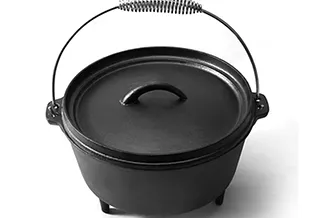
cast iron vs cast iron enamel
Cast Iron vs. Cast Iron Enamel A Comprehensive Comparison
When it comes to cookware, cast iron and cast iron enamel are two popular choices among culinary enthusiasts. Each type has its distinct characteristics, advantages, and potential drawbacks. Understanding these differences can help you make informed decisions about which type of cookware best suits your cooking style and preferences.
Cast Iron Cookware
Cast iron cookware has a rich history and is celebrated for its durability and excellent heat retention. Made from molten iron poured into molds, cast iron pans and pots can last for generations if properly maintained. One of the unique features of cast iron is its ability to retain and distribute heat evenly, making it perfect for searing meats, frying, and baking.
Moreover, with proper seasoning, cast iron develops a natural non-stick surface. Seasoning involves coating the cookware with oil and heating it to create a layer of polymerized fat, which not only adds to the cooking surface but also protects the iron from rust. However, this requires diligence; failing to maintain the seasoning can lead to rust and food sticking.
One downside to traditional cast iron is its weight; these pots and pans can be cumbersome to handle
. Additionally, acidic foods—like tomatoes or citrus—can react with the bare iron, imparting a metallic taste to dishes and damaging the seasoning.cast iron vs cast iron enamel

Cast Iron Enamel Cookware
In contrast, cast iron enamel cookware combines the robust nature of cast iron with a protective enamel coating. This outer layer is made from glass, which is fused to the iron at high temperatures, creating a durable and vibrant finish. This enamel coating eliminates the need for seasoning, making it easier to maintain and clean.
Cookware with enamel has the same excellent heat retention and distribution properties as traditional cast iron, making it equally suitable for various cooking methods. Additionally, because enamel is non-reactive, you can cook acidic foods without worrying about damaging the surface or altering the flavors of your dishes.
However, enamel-coated cast iron cookware can be prone to chipping and scratching, particularly if handled roughly or cleaned with abrasive materials. While it is certainly beautiful and available in many colors, the initial cost of enamel cookware tends to be higher than that of traditional cast iron.
Conclusion
In summary, both cast iron and cast iron enamel cookware have their merits and limitations. Traditional cast iron is an excellent choice for those who appreciate durability and the art of seasoning, while cast iron enamel is perfect for cooks seeking convenience and versatility without the maintenance hassle. Ultimately, the choice between these two types of cookware depends on your cooking habits, preferences, and willingness to invest time in care and maintenance. Whether you choose cast iron or cast iron enamel, both will serve you well in the kitchen, contributing to delicious meals and creating lasting culinary memories.
-
Season Cast Iron Perfectly with GPT-4 Turbo TipsNewsAug.01,2025
-
High Quality Cast Iron Cookware - Baixiang County Zhongda MachineryNewsAug.01,2025
-
Premium Cast Iron Pan: Durable & Perfect HeatNewsAug.01,2025
-
High Quality Kitchen Durable Black Round Cast Iron Cookware Pancake Crepe Pan-Baixiang County Zhongda Machinery Manufacturing Co., Ltd.NewsAug.01,2025
-
Cast Iron Cookware - Baixiang County Zhongda Machinery | Nonstick, Heat ResistanceNewsAug.01,2025
-
High Quality Kitchen Durable Black Round Cast Iron Cookware - Baixiang County Zhongda Machinery | Non-Stick, Heat Retention, DurableNewsJul.31,2025


